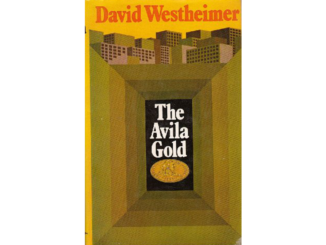The time is the mid 1970s. The place is Canvey Island. The band is the dynamic “proto-punk” outfit known as Dr Feelgood. (I put inverted commas round proto-punk because, although that is what some music journalists called them, I could be wrong but I’m pretty sure that they would simply have seen themselves as r&b-based rockers). Fronted by the charismatic, needle-thin Mr Brilleaux, not so much singing as attacking the mike and playing his harmonica with the demented energy of a Duracell bunny, the line-up also included the inimitable Wilko Johnson, who played, as Howe so exactly says, as if his guitar was possessed by a malevolent spirit which was leading him around the stage against his will.
Lee Brilleaux was born Lee Collinson in Durban in 1952. Yes, you read that right. This archetypal Essex geezer was born in South Africa. His parents, a lathe operator and a legal secretary, ‘bored by a long war’ had ‘just wanted to get away’ and emigrated in response to a need for skilled contractors. By the end of 1955, they were back in London. Lee grew up a bookish yet adventurous boy: at quite a young age, he often used to disappear off on his own, leaving his parents a note saying he’d gone to Canvey (where his grandparents lived) for the weekend and ‘See you on Monday’. Eventually he became a legal clerk, serving divorce papers and making reasonable money. The day inevitably dawned when he had to choose between music and the law. His mother Joan asked him which made him happier. We all know the answer to that one.
The band went through various iterations in the early days, including at one point being a jug band called the Razzamatazz Washboard Band. Playing small venues and the pub circuit, they were incredulous at their increasing success. ‘We thought it was all bollocks and we used to laugh ourselves sick about it on the way home’, Lee told Charles Shaar Murray. Eventually, however, the band that started as a bit of fun hit the big time, including the ‘Speeding Through Europe’ gigs, a CBS deal and gruelling tours of America – which sometimes did and sometimes didn’t ‘get’ them. It was a country which Wilko unfortunately ‘loathed’ but which brought Lee his girlfriend (later, wife) Shirley ’Suds’ Alford. With her New Orleans accent and liking for drink, even Shirley, despite trying her best, couldn’t keep up with the band’s consumption level – ‘Thank God Lee was away a lot of the time, otherwise I’d be dead’, she quipped. If it was a quip. She said Canvey reminded her of bits of redneck Louisiana.
As is often the way, a series of disagreements and fallings-out began to bedevil the band. Wilko, a teetotal, non-driving husband and father, was not a natural fit with the hard-drinking, itchy-footed Brilleaux or indeed the other Feelgoods, and in due course left, to be replaced by Gypie Mayo, who would play on arguably their two best-known TOTP appearances, Down At The Doctor’s and Milk and Alcohol. The lyrics for the latter were written by Nick Lowe in about twenty minutes. ‘They say, “That Nick Lowe writes lyrics on the back of a fag packet”’, Lowe later recalled. ‘On this occasion, I think I actually did’.
I think the designation ‘gentleman’ might be pushing it a bit. Although a term often used by those who had dealings with Lee, that description gently skates over incidents like his booting a fan in the face and pouring a pint over a restaurant carpet when they refused to honour a reservation for dinner. In many ways, Brilleaux was a wild man up for a scrap whose sarcasm could cut people dead. According to his widow, that was one reason he liked wearing suits: ‘People wanted to be rude, but they thought: better not, he’s wearing a suit’. As for that famous white one, it was apparently so filthy that it could have stood up by itself. Described along the way as the ‘stinky, stinky suit’, Shirley eventually threw it away as being too disgusting to exist.
The strength of this book is twofold: the meticulous background research and the personal interviews Zoë Howe has carried out. The endnotes are extensive. It is nicely written and gives a true snapshot of the mood and energy of a particular part of England at a particular juncture of its story, as previously depicted by Julien Temple in his atmospheric film about the Feelgoods, ‘Oil City Confidential’. If you want to know what that was like, this is it.
The b&w pictures add to the period feel. There is one image that stayed in my mind: that of a rather haunted-looking, bald, post-cancer Wilko smiling for the camera alongside Lee’s mother Joan, then elderly and looking rather fragile, after her son’s untimely death at just 41.
Oh, and one final thought: if Wilko Johnson had listened to his NHS (mis)diagnosis, he imo most probably wouldn’t be here today either.
© foxoles 2022




